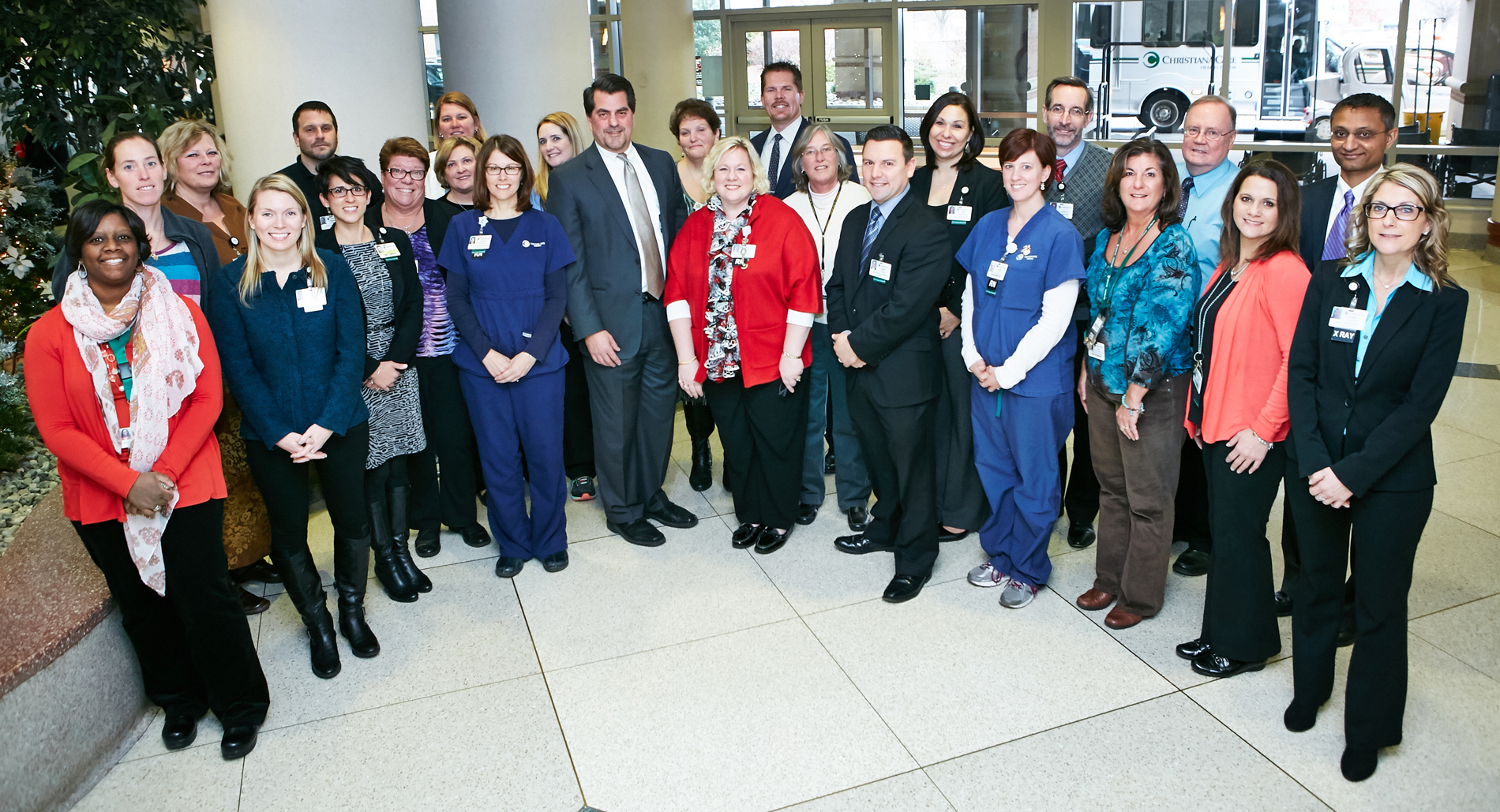Second class of Lean Six Sigma Green Belts poised to make an impact


Christiana Care Health System recognized its second class of Lean Six Sigma Green Belt candidates at a ceremony in December for projects they’ve undertaken to improve the quality and value of patient care. The 27 Green Belts come from nearly 20 departments, both clinical and nonclinical, ranging from medicine to finance to nutrition.
“Our Green Belt candidates have completed projects that make our patient care better, safer and more efficient and, at the same time, have a significant positive financial impact on our organization,” said Vernon Alders, MHCDS, MBA, MSW, corporate director of Organizational Excellence and director of the Center for Organizational Excellence at Christiana Care’s Value Institute.
Lean Six Sigma is a customer-focused model of performance improvement that has a positive effect on efficiency, effectiveness and affordability of health care by changing health care delivery systems and clinical practices, and improving patient outcomes.
Sponsored in partnership with the Juran Institute, an internationally recognized quality-management company, Lean Six Sigma demonstrates that by tackling problems with a set of proven tools in a defined series of steps, managers and employees can accurately identify root causes and design data-driven solutions to improve and sustain them.
“We’ve implemented this program so we can build capacity within our organization to change and improve,” Alders said. “We’re developing a skill set among our clinical and operational staff that will allow them to improve care to our patients at the same time they are giving care, to add process expertise to their professional expertise.”
Under the guidance of senior leaders who served as project mentors, or “champions,” this year’s Green Belts worked in teams on 16 projects that found ways to solve problems the candidates identified through their daily work. Participants devoted 25 percent of their work time to the projects over six to eight months.
In one project, Beth Donovan, RN, a wound ostomy and continence nurse, and Michelle Collins, MSN, RN-BC, ACNS-BC, director of Nursing Development and Education and Wound Ostomy and Continence Nursing, addressed improving patient care and the patient experience by researching and successfully implementing processes to reduce the incidence of unit-acquired pressure ulcers.
Focusing on three units where pressure-ulcer rates were above benchmark levels, Donovan and Collins researched why the ulcers might be occurring and implemented several strategies to reduce them, ultimately leading to a sustained drop in pressure ulcer rates of more than 30 percent — twice their goal reduction. This reduction yielded better outcomes and patient experience, plus more than $125,000 in cost-savings and avoidance of federal Medicare penalties associated with unit-acquired pressure ulcers.
This year’s Green Belt projects also included Emergency Department staff successfully reducing by 17 percent the “door-to-doctor” time it takes Emergency Department patients to see a physician upon arrival — addressing an annual operating plan goal. In another project, a perioperative Green Belt candidate streamlined and updated surgical dissection trays to include only instruments routinely used, in line with current medical practices, resulting in 1,700 fewer instruments to clean, count and reassemble each day.
“We want to leverage our ability to change. If we ultimately can share these abilities and skills with our workforce, we’ll begin to change the way the organization problem-solves — the way we think, act and improve things,” Alders said, noting the program has developed about 60 Green Belts or candidates to this point, and has a third class getting started.
“So far, the impact has been significant. Looking narrowly at financial savings, we’re seeing a $9 – $10 return for every dollar we spend on this program. These projects are evaluated on several levels: Do they improve patient care? Do they reduce costs? And do they improve the patient experience? We want to know that this program is providing our staff with a great educational experience as well as having a direct impact on making care better, safer and more efficient.”
At the ceremony, Chief Medical Officer Ken Silverstein, M.D., MBA, congratulated the candidates on their work, encouraging them to continue championing their projects.
“The ultimate deliverable is high-value care — care that is high-quality, safe, meets the expectations of patients and families, and is done in an affordable way,” Dr. Silverstein said. “And while the fundamental interaction is the patient-provider interaction, it’s no longer enough to exist just there. Your work can continually improve the system of care, and that’s an incredible accomplishment of which you should all be incredibly proud.”
To learn more about the Green Belt program, contact Organizational Excellence at 302-623-5819.